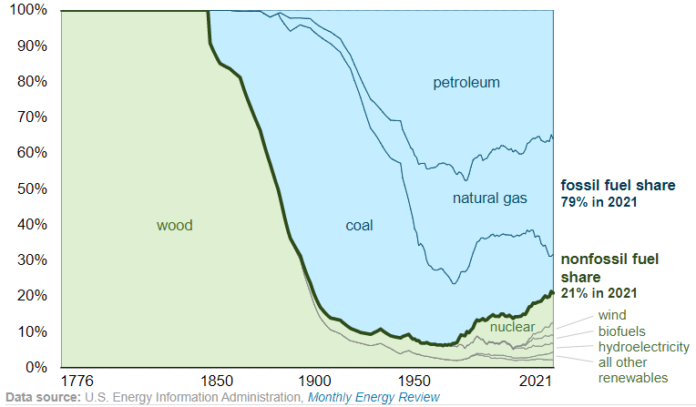Fossil fuels – petroleum, natural gas, and coal – has accounted for 79% of the 97 quadrillion British thermal units (quads) of primary energy consumption in the United States during 2021. About 21% of U.S. primary energy consumption in 2021 came from fuel sources other than fossil fuels, such as renewables and nuclear, according to data in the U.S. Energy Information Administration’s (EIA) Monthly Energy Review.
The 4-quad increase in U.S. primary energy consumption last year was the largest annual increase on record and was mostly attributable to a gradual return to pre-pandemic levels of activity. The increase in 2021 follows a 7-quad decrease in 2020, which was the largest annual decrease on record.
Consumption of renewable energy in the United States increased slightly from 11.5 quads in 2020 to a record of 12.2 quads in 2021. Increased use of renewables for electricity generation, including wind and solar energy, was partially offset by a decline in hydroelectricity generation. U.S. nuclear energy consumption totaled 8.2 quads in 2020, the lowest level since 2012.
Petroleum has been the most-consumed primary energy source in the United States since surpassing coal in 1950. Consumption of petroleum in the United States remains less than its 2005 peak, totaling 35 quads in 2021. U.S. natural gas consumption totaled 31.3 quads in 2021, a slight decline from the previous year.
U.S. coal consumption increased to 10.5 quads in 2021, marking the first annual increase in U.S. coal consumption since 2013. U.S. coal consumption has fallen by more than half since its peak in 2005. Reduced coal-fired electricity generation has driven much of this decline.




